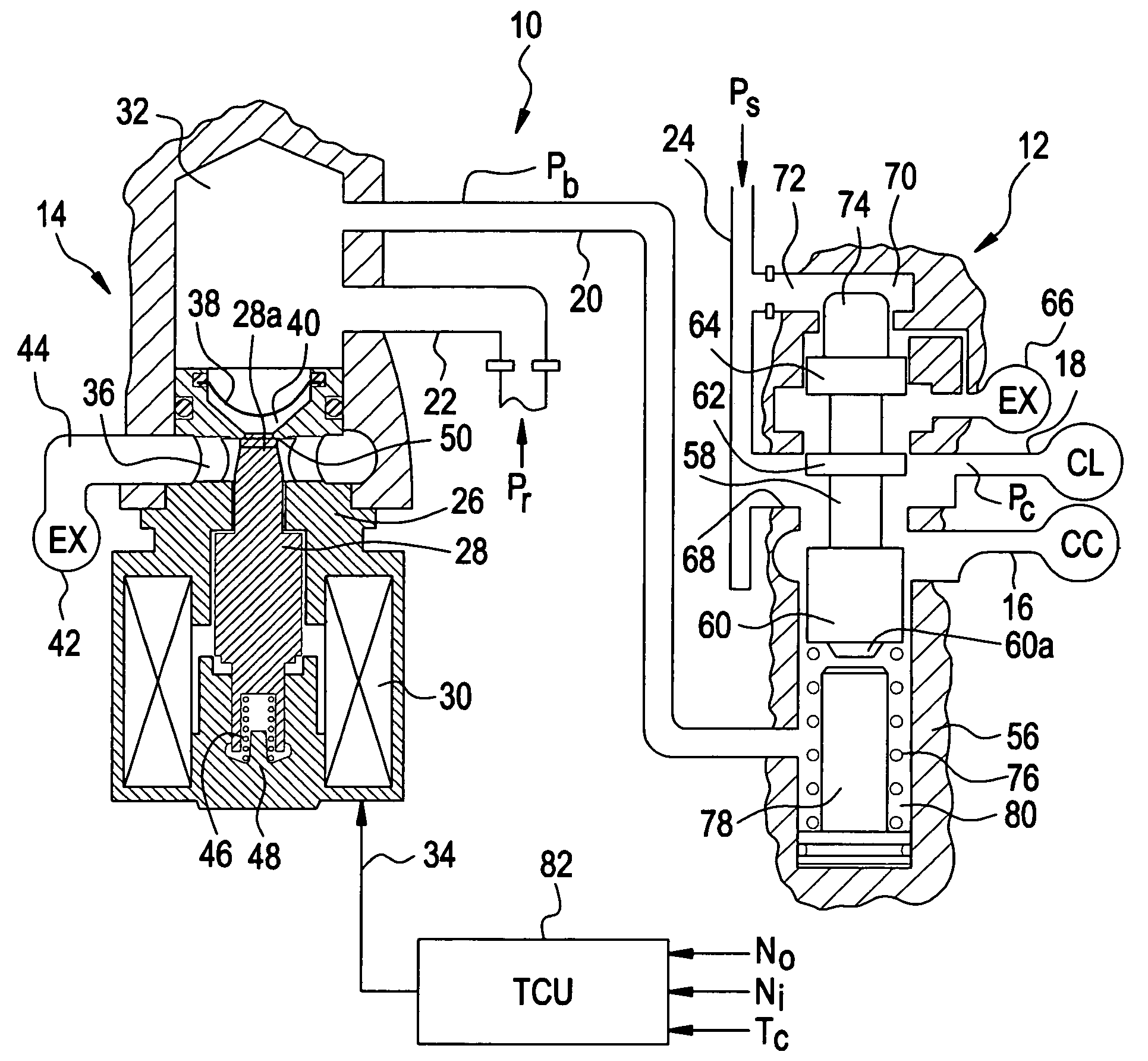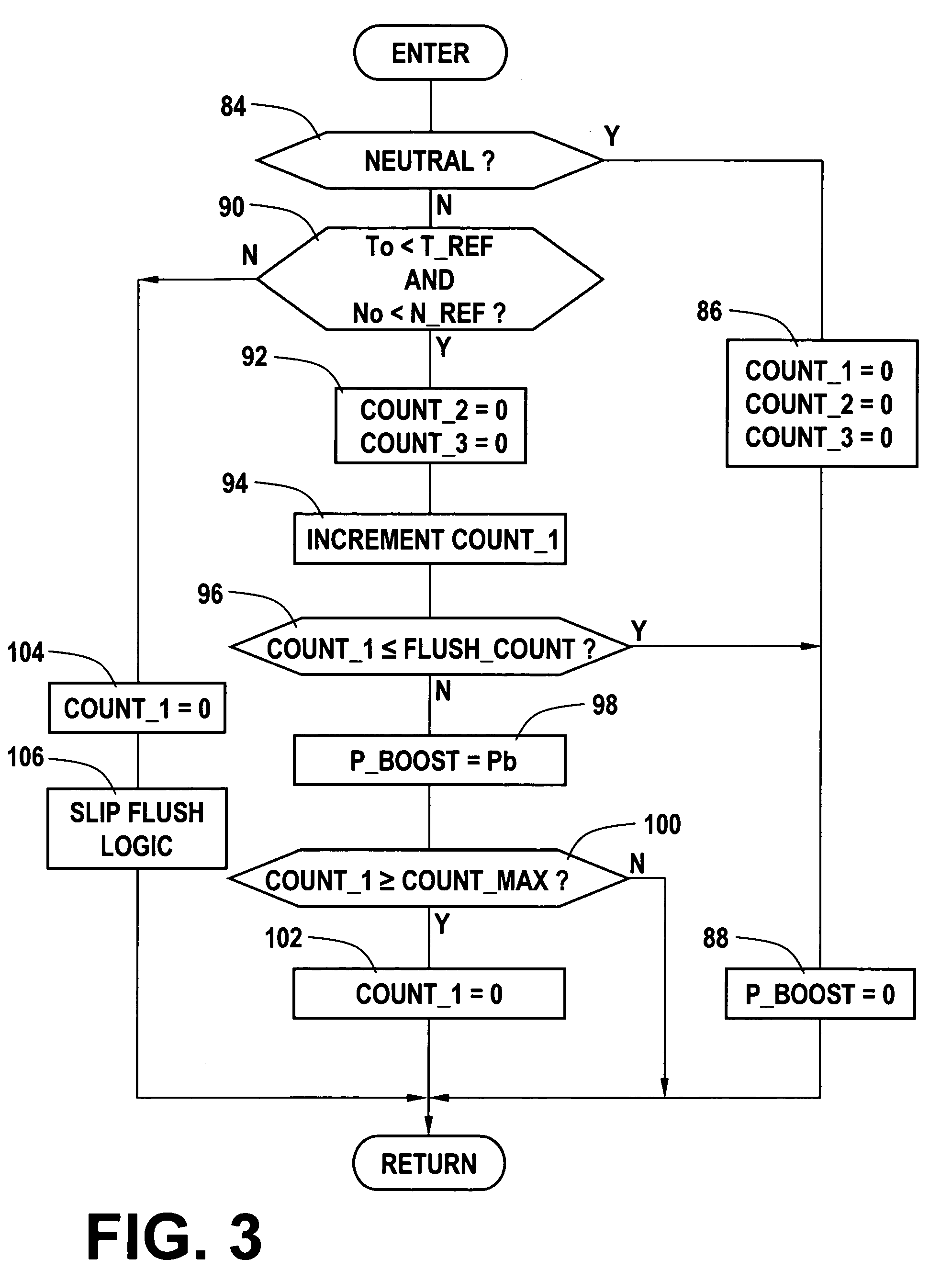Method of automatically flushing debris from an electrically-operated hydraulic valve
a technology of electrically operated hydraulic valves and automatic flushing, which is applied in the direction of valve operating means/releasing devices, mechanical equipment, transportation and packaging, etc., can solve the problems of preventing proper valve operation, accumulating debris between the armature and the valve seat, and fine debris normally present in filtered hydraulic transmission fluid
- Summary
- Abstract
- Description
- Claims
- Application Information
AI Technical Summary
Benefits of technology
Problems solved by technology
Method used
Image
Examples
Embodiment Construction
[0009] Referring to FIG. 1, the reference numeral 10 generally designates a hydraulic pressure regulation circuit of a motor vehicle transmission, including a hydraulically-activated pressure regulator valve (PRV) 12 and an electrically-activated boost pressure valve (BPV) 14. The PRV 12 supplies hydraulic fluid to a cooler circuit (CC) via line 16 and regulates a clutch pressure (Pc) in line 18 for at least one hydraulically-engaged clutch CL. The BPV 14 supplies a boost pressure Pb to PRV 12 via line 20. The boost pressure Pb is derived from a reference pressure Pr supplied to BPV 14 via flow restricted line 22, while the cooler circuit fluid and clutch pressure Pc are derived from a pump supply pressure Ps in line 24. Of course, the PRV 12 and BPV 14 may be combined into a single valve if desired.
[0010] The BPV 14 includes a valve body 26, an armature 28, a solenoid coil 30 and a valve chamber 32 to which lines 20 and 22 are coupled. The solenoid coil 30 is electrically activate...
PUM
 Login to View More
Login to View More Abstract
Description
Claims
Application Information
 Login to View More
Login to View More - R&D
- Intellectual Property
- Life Sciences
- Materials
- Tech Scout
- Unparalleled Data Quality
- Higher Quality Content
- 60% Fewer Hallucinations
Browse by: Latest US Patents, China's latest patents, Technical Efficacy Thesaurus, Application Domain, Technology Topic, Popular Technical Reports.
© 2025 PatSnap. All rights reserved.Legal|Privacy policy|Modern Slavery Act Transparency Statement|Sitemap|About US| Contact US: help@patsnap.com



